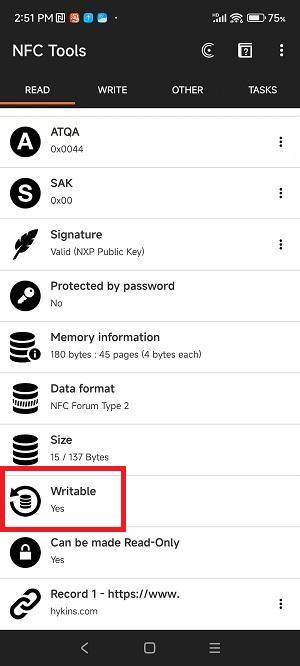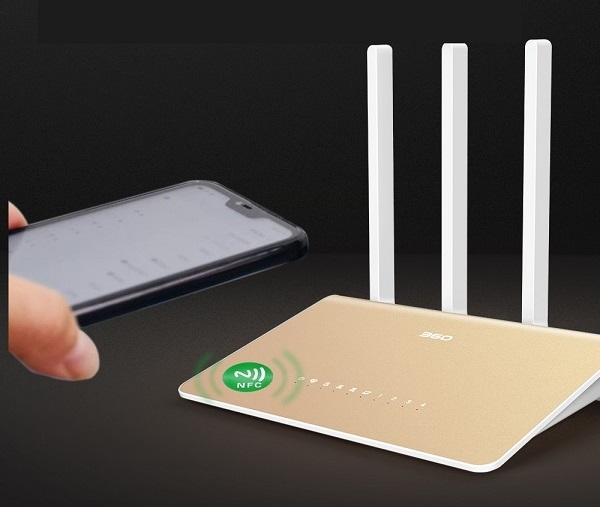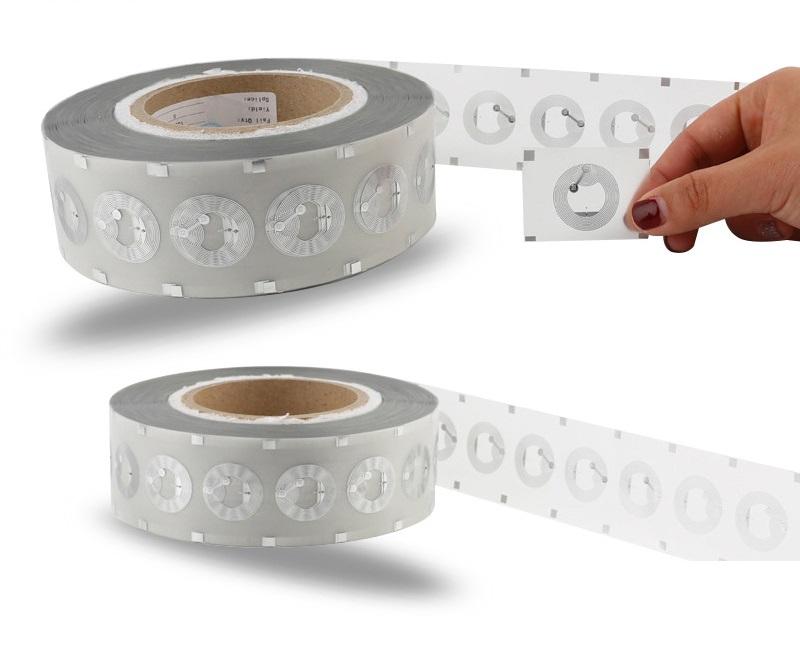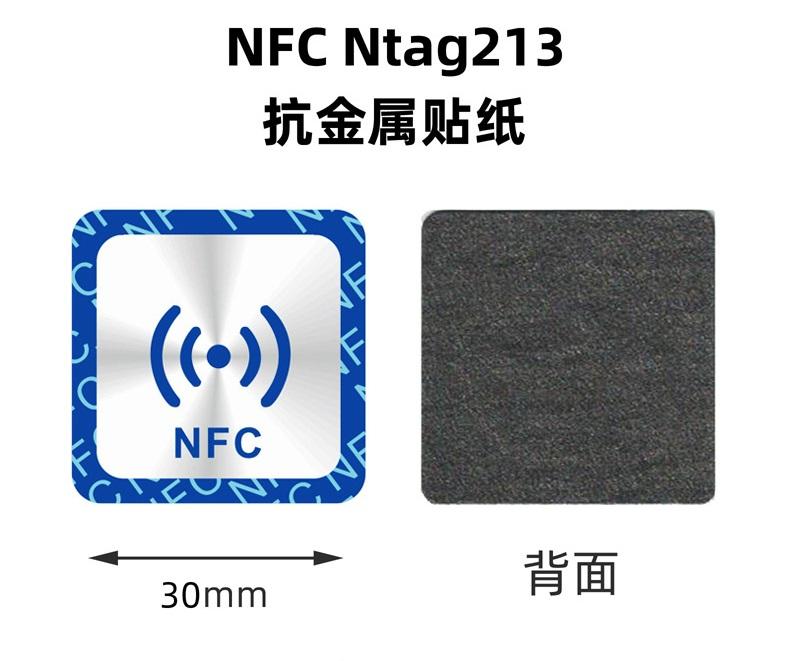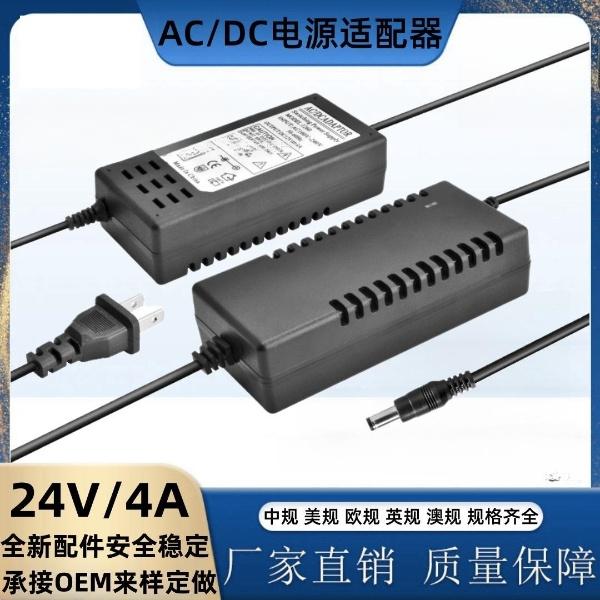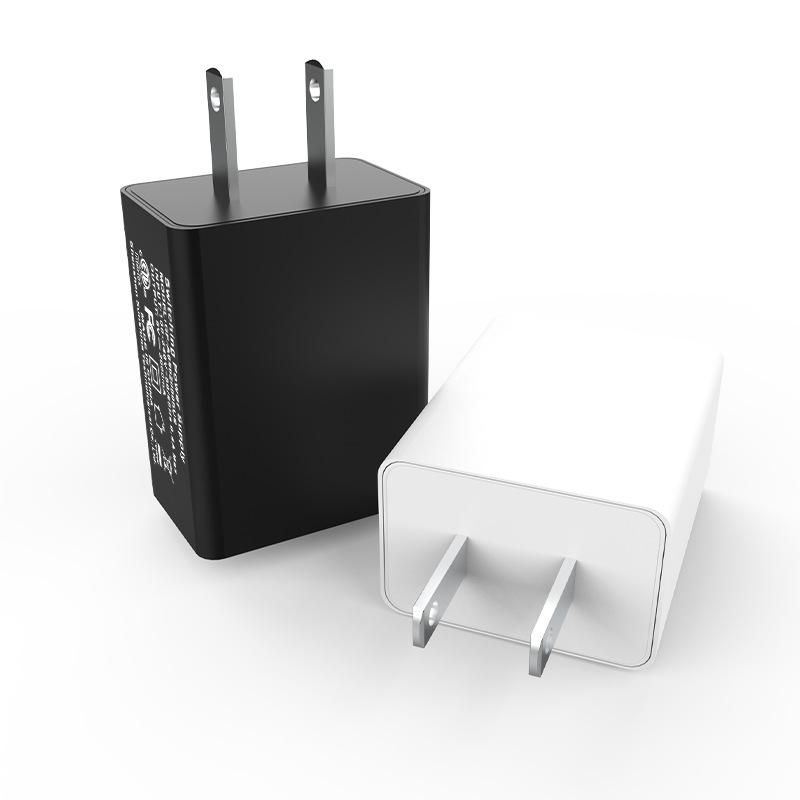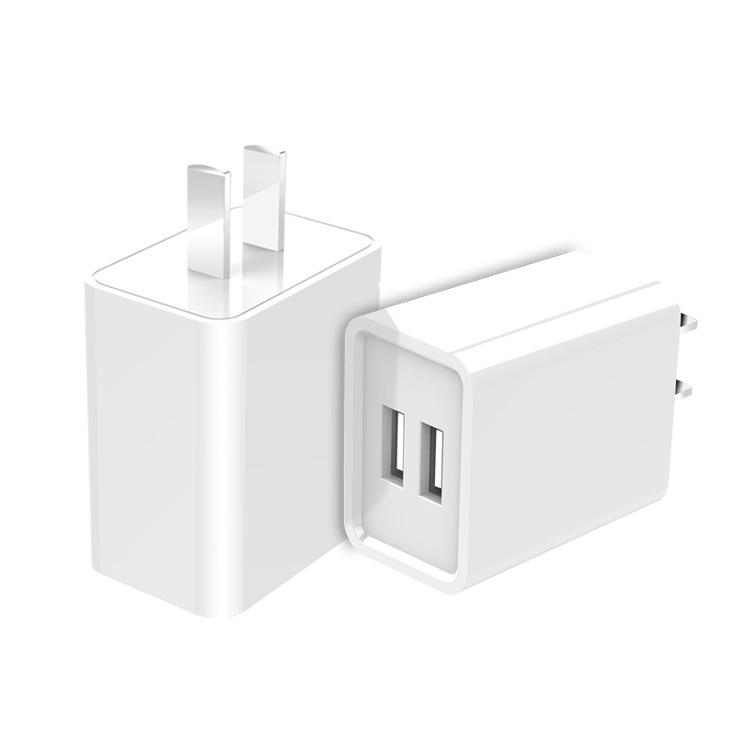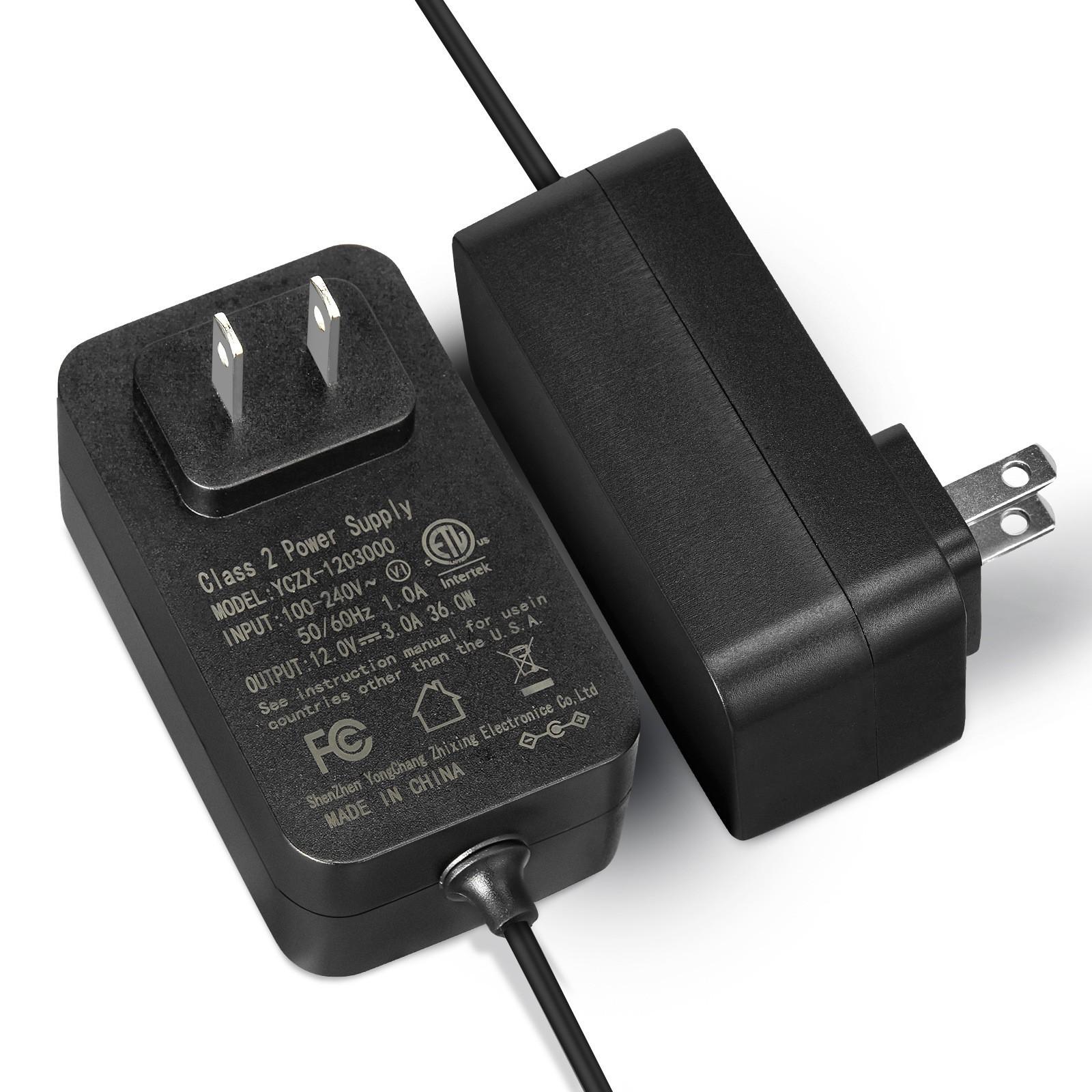This article explains how to use NFC tags to connect to Wi-Fi, providing detailed guides for Android devices and for iPhone. Android devices can scan NFC tags to auto-connect to Wi-Fi, while iPhones can only use NFC to trigger a shortcut that displays Wi-Fi credentials and opens Wi-Fi settings but won’t auto-connect to Wi-Fi.
How to use NFC tags to connect to Wi-Fi?
Using NFC tags to connect Android devices to a Wi-Fi network is a convenient way to share Wi-Fi credentials without manual entry.
NFC tags can store various types of information, including Wi-Fi credentials. When an NFC-enabled Android device scans the tag, it can automatically connect to the specified Wi-Fi network, simplifying the process for guests or users who need access to the Wi-Fi network.
By following the steps below, you can effectively program NFC tags for Wi-Fi connectivity, making it easy for users to connect with just a tap. Please note that these steps below are for Android devices only. For iPhone users, it's a much different way to use NFC tag to connect to Wi-Fi on iPhone since Apple does not currently support setting Wi-Fi networks automatically via NFC.
- Choose an NFC tag that is rewritable and has at least 128 bytes of memory for storing Wi-Fi credentials.
- Install an NFC programming app, such as NFC Tools.
-
Open the NFC Tools app, select the "Write" tab, then tap "Add a record".

-
Scroll down and choose “Wi-Fi network”.
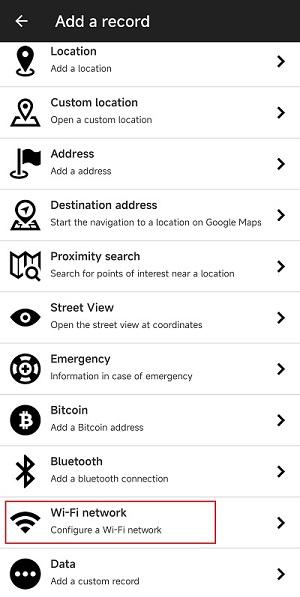
-
Enter Wi-Fi credentials, including SSID (Wi-Fi network name), password, authentication type and encryption type. You can simply choose the same authentication type and encryption type as in this example.
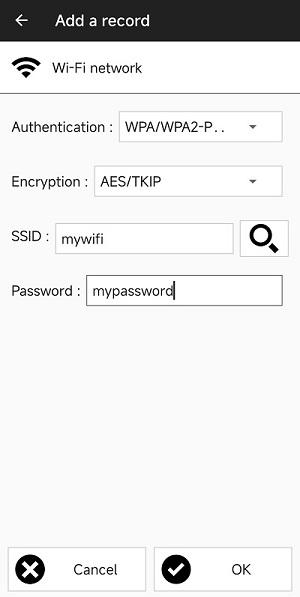
-
Tap the “Write” button in the app.
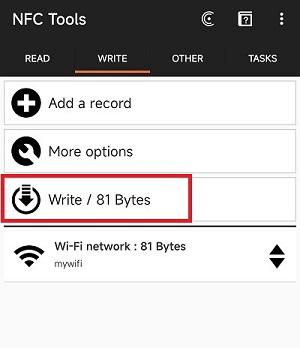
-
Then hold the NFC tag against your device to write the data.
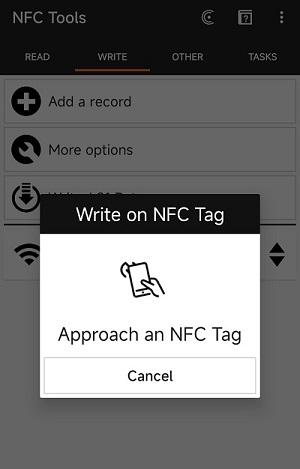
-
The app will indicate when the writing process is complete.
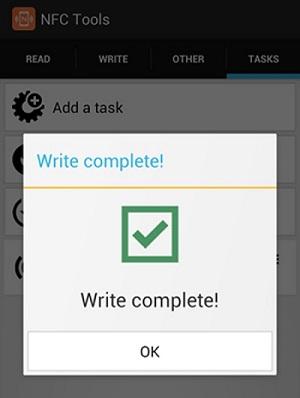
- After writing data, place the NFC tag in a convenient location, like near the router or in a common area for guests.
- Bring your NFC-enabled device close to the NFC tag. The device will read the stored Wi-Fi credentials and prompt a connection request. Confirm the connection and your phone is connected to Wi-Fi.
What is the NFC protocol for Wi-Fi?
The NFC protocol for Wi-Fi follows a standard defined by the Wi-Fi Alliance called Wi-Fi Protected Setup (WPS) via NFC. This protocol enables Wi-Fi configuration through NFC, allowing devices to connect to a wireless network by simply tapping an NFC tag or another NFC-enabled device.
| Technical Standards Involved in Wi-Fi Protected Setup (WPS) via NFC | |
|---|---|
| NFC Forum RTD (Record Type Definition) | Defines how data like Wi-Fi credentials are encoded |
| WPS (Wi-Fi Protected Setup) with NFC Token | A WPS method where NFC is used to transfer credentials |
| Wi-Fi Simple Configuration (WSC) | The broader standard that includes NFC, USB, PIN, and push-button methods |
When writing Wi-Fi credentials to an NFC tag, tools like NFC Tools use an NDEF (NFC Data Exchange Format) message containing SSID (Network Name), Authentication Type (WPA/WPA2/WEP/None), Password/Key and Hidden flag (optional).
This information is packaged in a WSC-specific NDEF record, usually of MIME type:
application/vnd.wfa.wscHere’s how it works in practice when connecting to Wi-Fi with an NFC tag.
- A tag or device contains an NDEF message with Wi-Fi credentials.
- Another NFC-capable device reads the tag.
- The system (Android) recognizes the “application/vnd.wfa.wsc” record.
- The phone prompts the user to join the specified network (or connects automatically).
How reliable is NFC for connecting guests to my Wi-Fi network?
Using NFC to connect guests to your Wi-Fi network is quite reliable and secure, especially for quick, user-friendly access. It's Reliable with many Advantages.
-
Simple for Guests
Just tap their phone on an NFC tag—no need to type long passwords. It's great for non-tech-savvy users (e.g., in homes, cafés, offices). -
Accurate
No typos like with printed passwords. The NFC chip transmits exactly what you program. -
Secure
NFC has a very short range (≤4 cm), which limits exposure to nearby attackers. You control what’s programmed onto the tag. -
Fast
Instant connection if the device supports it properly (especially on Android).
However, there are a few technical and practical limitations.
-
Platform Support
Android supports Wi-Fi via NFC; iPhones do not (as of iOS 17, they can read NFC tags but won’t auto-connect to Wi-Fi). -
NFC Must Be Enabled
If guests don’t have NFC turned on, it won’t work. -
Not All Tags Work
Cheap or incompatible tags may fail. Use NTAG213/NTAG215/NTAG216. -
Read-Only Risk
Once a tag is locked (write-protected), it can’t be changed. So test it thoroughly first.
How to use NFC tag to connect to Wi-Fi on iPhone?
iOS cannot auto-connect to Wi-Fi via NFC (unlike Android). A fully automatic Wi-Fi connection via NFC on iPhone is not supported by Apple due to privacy/security policies. So you must go through Shortcuts or QR codes, and the best practice is to use NFC to trigger a Shortcut that displays Wi-Fi credentials and opens Wi-Fi settings.
To use an NFC tag to connect an iPhone to Wi-Fi, you need to ensure your iPhone model supports NFC reading, and then use the iOS Shortcuts app to encode the NFC tag, which will trigger a Shortcut when tapping an iPhone to it and guide the user to join a Wi-Fi network. Here are the steps:
-
Open the Shortcuts App, go to the Automation tab at the bottom and choose "Create Personal Automation".

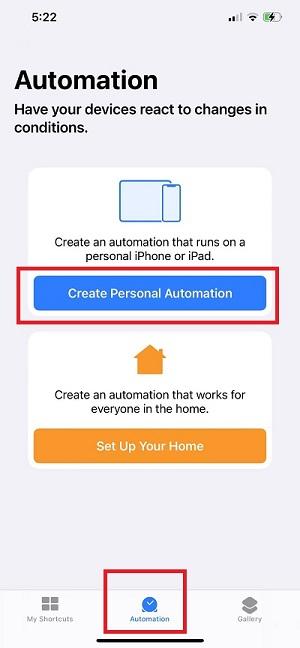
-
Scroll down and choose "NFC" as the Trigger. Tap Scan, hold your iPhone near your blank NFC tag and name it (e.g., "Home Wi-Fi").

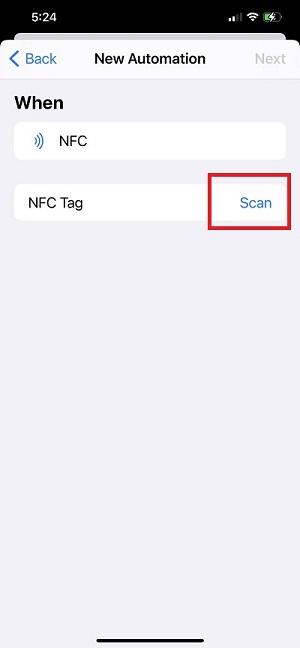

-
After scanning your tag, you'll be taken to the action screen where you need to Add 2 Actions.
-
Action 1: Show Wi-Fi Details
Tap "Add Action" and search for "Show Alert". Enter a message like:
Wi-Fi: MyNetworkName Password: myStrongPassword123 Tap OK to open Wi-Fi Settings.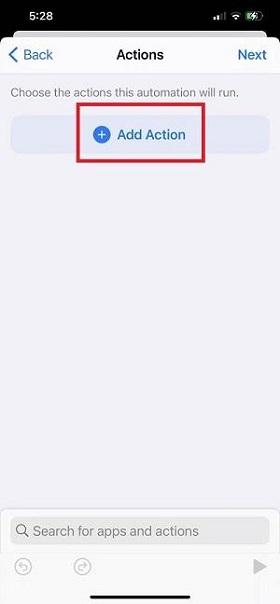
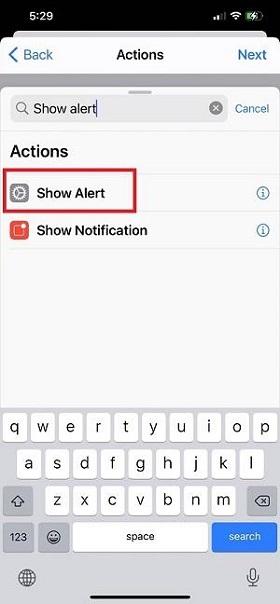
-
Action 2: Open Wi-Fi Settings
Tap "Add Action", use "Open App" and choose the Settings app. This brings the user to iPhone Settings where they can tap Wi-Fi.
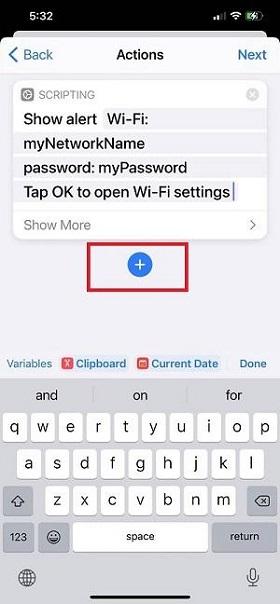
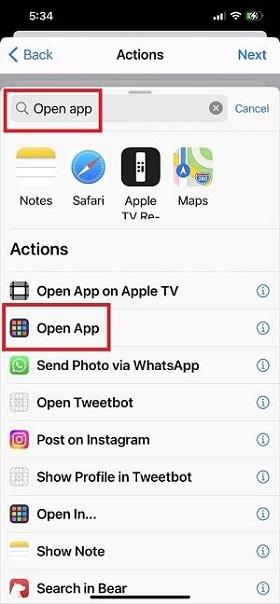
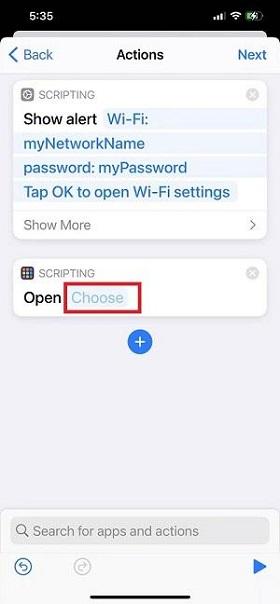
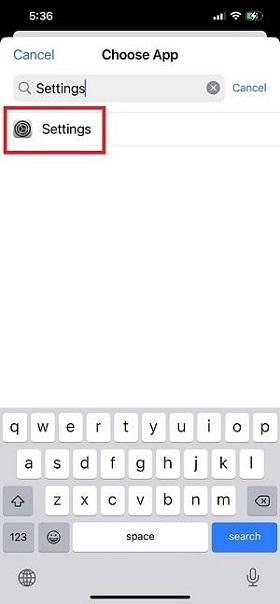

-
-
After setting the actions, toggle "Ask Before Running" OFF and tap "Don’t Ask" to confirm.

It's Done! Now, when you tap your iPhone to the NFC tag, it will display your Wi-Fi name and password (as shown in the image below), and prompt you to open Wi-Fi Settings so you can manually join the Wi-Fi network.
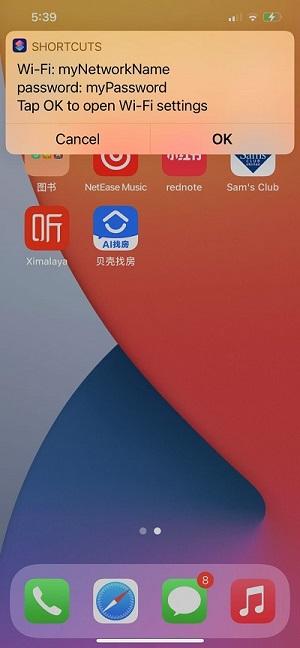
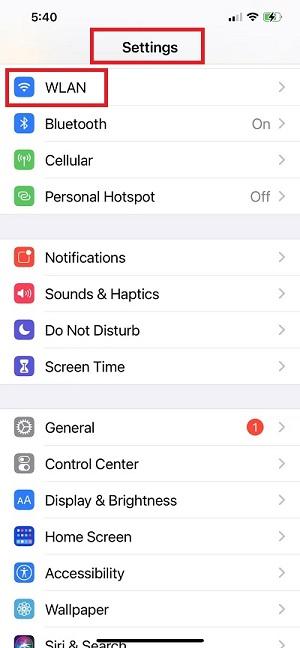
A simpler way to connect to Wi-Fi, even without an NFC tag
There is a simpler way to connect to Wi-Fi without an NFC tag: Wi-Fi Easy Connect.
Wi-Fi Easy Connect allows a device to connect to Wi-Fi by simply tapping it against another device or an NFC tag that contains the Wi-Fi credentials. It can absolutely work without an NFC tag. The NFC tag is optional and just one of several ways to initiate the secure connection.
Here are the main methods to use Wi-Fi Easy Connect. You can choose QR Code or App-based Setup to use Wi-Fi Easy Connect without an NFC tag.
| Method | NFC Tag Required? | Description |
|---|---|---|
| QR Code | No | Most common; scan to connect |
| App-based Setup | No | Via Bluetooth, temp AP, or cloud pairing |
| NFC Tag | Yes | Optional—used to trigger credential sharing |
QR Code Scanning
One device (like your phone) generates a QR code containing Wi-Fi credentials. Another device scans it to join the network. It is supported on Android 10+ (most phones), some smart devices, and some routers.
These are the steps:
- On your Android phone, go to your connected Wi-Fi network.
- Tap the gear icon > Share (authenticate with PIN or fingerprint).
- A QR code appears with the Wi-Fi info.
- Use the other device to scan the QR code (e.g., with its camera or Wi-Fi setup menu).
Device-to-Device Setup via App
Some devices (especially smart home devices or routers) let you configure Wi-Fi credentials via a companion app that uses Bluetooth, Temporary Wi-Fi AP (access point) or Local network discovery (mDNS, etc.). This still uses the Wi-Fi Easy Connect protocol under the hood, just without needing QR or NFC.
How to use NFC Tools?
NFC Tools is a popular app that allows users to read, write, and program NFC tags on mobile devices, enabling various applications from simple data sharing to complex automation tasks. Using NFC Tools is quite similar on both Android and iPhone.
How to use NFC Tools on Android and iPhone
Here’s a detailed guide on how to use NFC Tools on Android and iPhone.
-
Install NFC Tools
For Android devices, search for NFC Tools on Google Play Store and download the app developed by Wakdev. For iPhone, search for and download the NFC Tools app on Apple App Store.
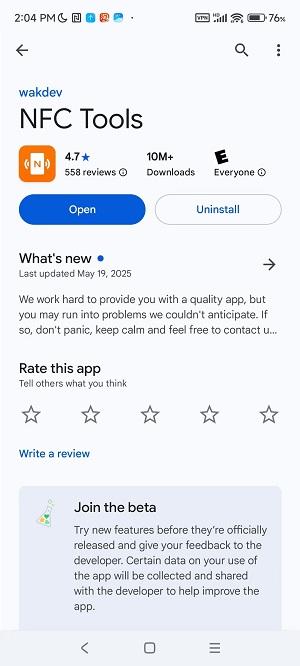
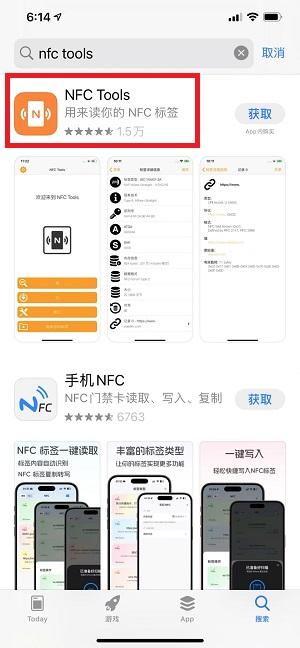
-
Enable NFC
Before using NFC Tools, ensure that NFC is enabled on your device.
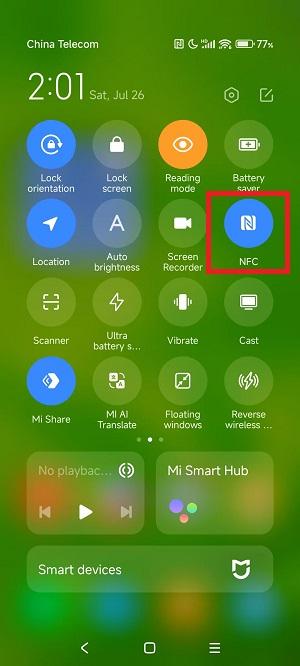
-
Launch the app
Open the NFC Tools app from your app drawer. You can familiarize yourself with the main tabs: "Read", "Write", "Other", and "Tasks".
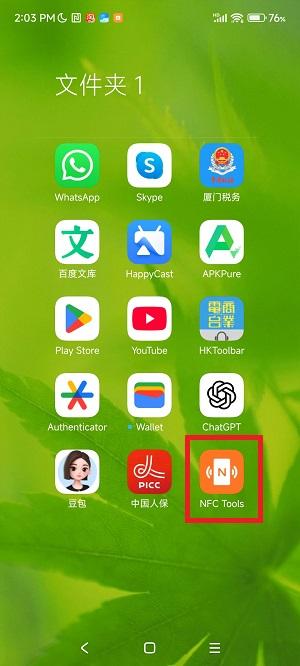
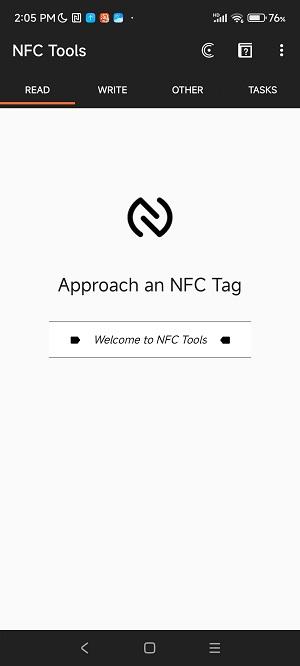
-
Read an NFC Tag
Tap the "Read" tab, then bring the NFC tag close to the back of your device. The app will detect the tag and display its information, such as tag type and record data.
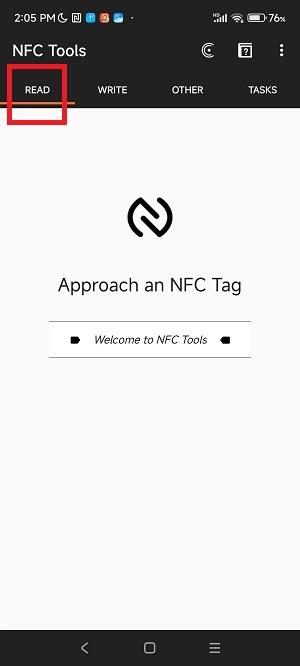
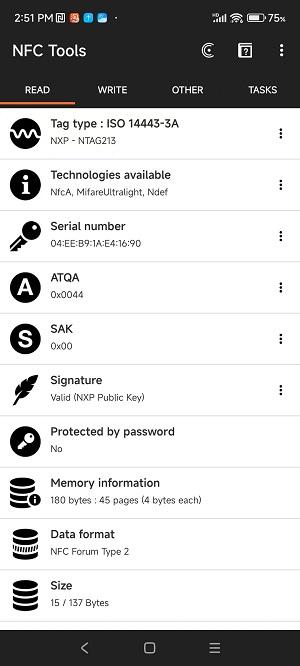
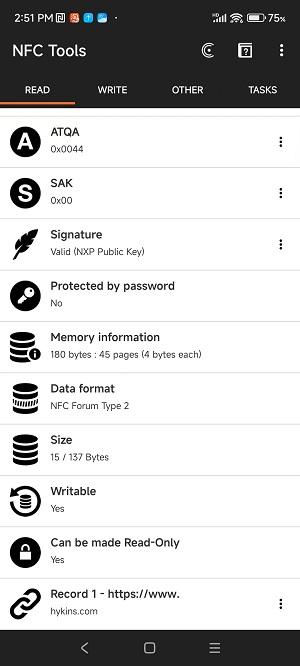
-
Write to an NFC Tag
Select the "Write" tab, then tap "Add a record" to choose the type of data you want to write (e.g., URL). After adding your desired record, tap "Write" and then hold the NFC tag against your device to write the data.
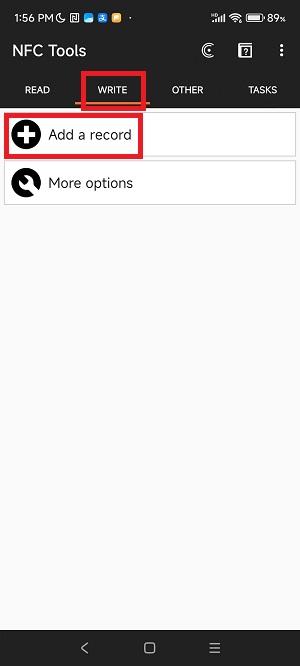
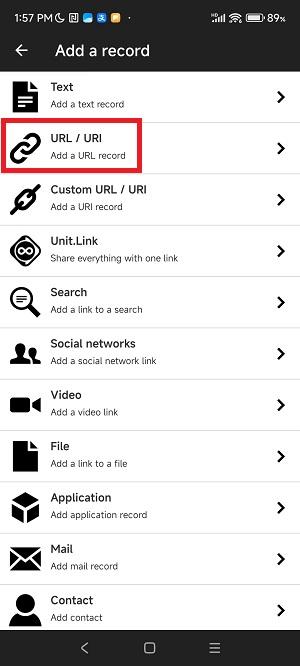
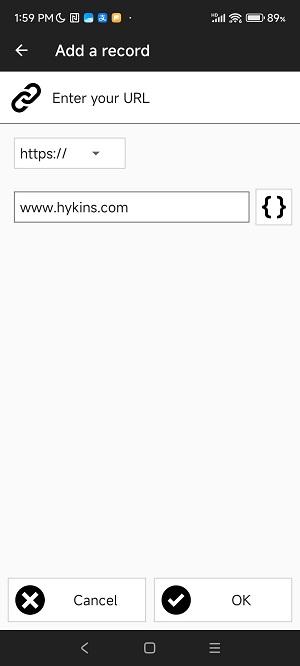
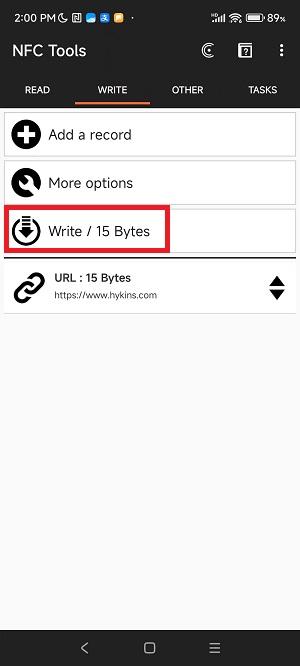
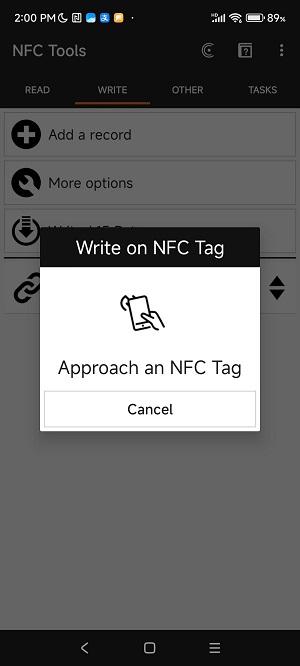
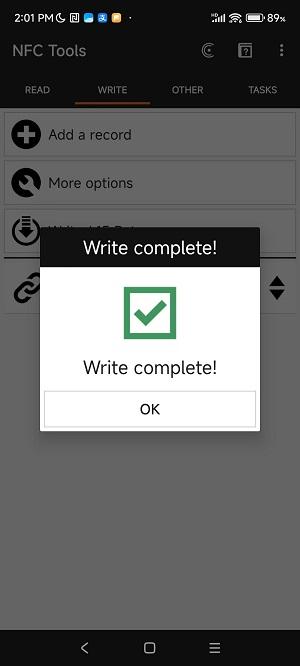
-
Configure actions
In addition to basic data, you can also configure actions like sending a message (as shown in the image below) or launching an app. You can do so by selecting the appropriate action type when adding a record in the "Write" tab.

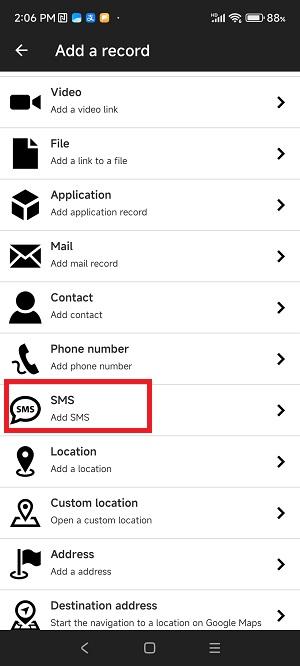
-
Test Your NFC tag
After writing data or configuring actions, tap your phone on the NFC tag to test if it performs as expected.
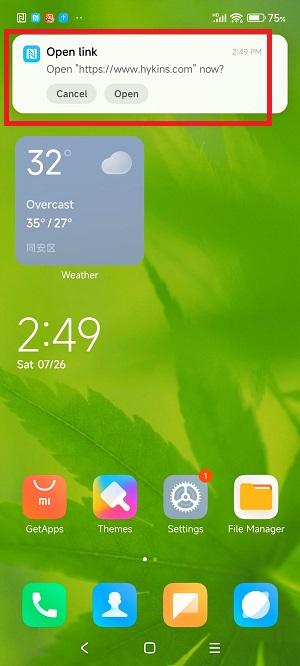
By following these above steps, you can now easily use NFC Tools on your device for various tasks and automations. Additionally, you can also explore the "Tasks" tab for automation options which allow you to set up complex actions triggered by scanning tags.
Differences Between Android and iPhone
When using NFC Tools, there are some key differences between Android and iPhone.
| Feature | Android | iPhone |
|---|---|---|
| Can Write Tags | Yes | Yes |
| Read Tags | Yes | Yes (iOS 13+) |
| Trigger Apps | Yes | No (iOS doesn’t allow app launching directly) |
| Background Reading | Yes | iOS 14+ only (works only for URLs and supported formats) |
| Rewriting Tags | Yes | Limited (iPhone may not support all tag types) |
| Automations | Works with NFC Tools + Tasks app | Use Shortcuts app for automation |
For automation, you can use NFC Tools with NFC Tasks on Android, and on iPhone, combine NFC Tools (to write basic info) with the Shortcuts app (for automation).
What NFC tags are rewritable?
A rewritable NFC tag is an NFC tag that allows you to write, erase, and rewrite data multiple times (typically up to 100,000 cycles). These are ideal for projects like Wi-Fi sharing, smart business cards, home automation triggers and event check-ins.
Here are some popular rewritable NFC tags.
| Model | Type | Memory | Rewritable? | Best For |
|---|---|---|---|---|
| NTAG213 | NFC Forum Type 2 | 144 bytes | Yes | Simple text, URLs, Wi-Fi |
| NTAG215 | NFC Forum Type 2 | 504 bytes | Yes | Amiibo spoofing, vCards |
| NTAG216 | NFC Forum Type 2 | 888 bytes | Yes | Complex actions, larger data |
| MIFARE Classic 1K | Proprietary | 1 KB | Yes. Rewritable unless locked (set to read-only permanently, either by software or physically). | Access control (some phones incompatible) |
Here’s how you can check if your tag is rewritable.
- Use the NFC Tools app to read your NFC Tag.
-
Look at the "Writable" field in the tag data. If it says Yes, it’s still rewritable. If No, it’s locked and permanent.
